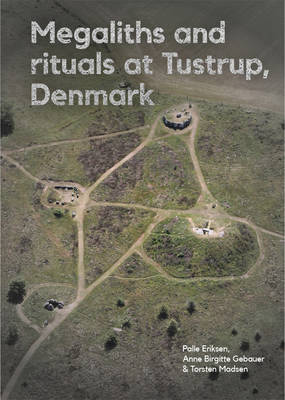
- Afhalen na 1 uur in een winkel met voorraad
- Gratis thuislevering in België vanaf € 30
- Ruim aanbod met 7 miljoen producten
- Afhalen na 1 uur in een winkel met voorraad
- Gratis thuislevering in België vanaf € 30
- Ruim aanbod met 7 miljoen producten
Zoeken
€ 113,95
+ 227 punten
Omschrijving
The complex of megaliths near Tustrup is a prime example of the megalithic sites used by early farming communities in Stone Age Europe. Excavated in the 1950s by Moesgaard Museum, the site continues to hold great contemporary and scientific value. Its significance relates primarily to the unusual find of a ritual complex connected to two dolmens and passage grave. The question of why monumental sites played such an important role for early farming communities is currently the focus of several international studies. In Denmark, which boasts one of the world's largest concentrations of megalithic monuments as well as a strong tradition for research in the area, archaeologists have had a longstanding wish to contribute to this discussion with a comprehensive publication about the unique complex of megaliths near Tustrup. Experts have researched the finds and meticulously analysed the site and its artefacts. These detailed studies have led to surprising and well-documented interpretations of the megalithic tombs, the construction history of the ritual site and their function, along with the inter-relationship between the monuments.
Specificaties
Betrokkenen
- Auteur(s):
- Uitgeverij:
Inhoud
- Aantal bladzijden:
- 486
- Taal:
- Engels
- Reeks:
- Reeksnummer:
- nr. 126
Eigenschappen
- Productcode (EAN):
- 9788793423909
- Verschijningsdatum:
- 18/12/2023
- Uitvoering:
- Hardcover
- Formaat:
- Genaaid
- Afmetingen:
- 213 mm x 290 mm
- Gewicht:
- 2245 g

Alleen bij Standaard Boekhandel
+ 227 punten op je klantenkaart van Standaard Boekhandel
Beoordelingen
We publiceren alleen reviews die voldoen aan de voorwaarden voor reviews. Bekijk onze voorwaarden voor reviews.








